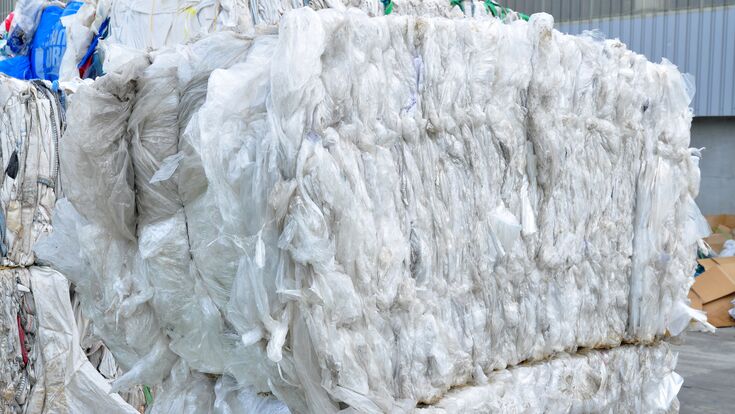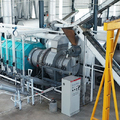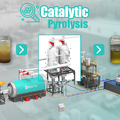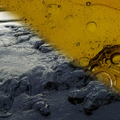Polyethylene (PE) is one of the most widely used plastics, with applications ranging from packaging materials to household goods. Due to its extensive presence in both consumer products and waste streams, PE has become a key target for plastic recycling technologies. Among various recycling methods, plastic pyrolysis is an efficient way to convert PE waste into valuable products such as oil, gas, and carbon black. The use of PE as the feedstock in a plastic pyrolysis plant offers numerous advantages that make it one of the best materials for pyrolysis processes.
High Energy Yield
One of the most significant advantages of PE in pyrolysis is its high energy yield. When PE undergoes pyrolysis, it breaks down into liquid hydrocarbons, gases, and solid carbon residues. The liquid oil produced can be further refined and used as fuel, while the gaseous by-products, including methane and ethylene, can be utilized for energy generation. PE’s chemical structure, primarily composed of long carbon chains, provides a high calorific value during thermal decomposition, making it an excellent source of energy. This high energy yield contributes to the efficiency and profitability of a plastic pyrolysis plant.

Consistent and Predictable Composition
PE is a relatively simple polymer, consisting mainly of carbon and hydrogen atoms in a stable structure. This simplicity gives it a predictable and consistent behavior during the pyrolysis process. The uniformity of PE’s composition ensures that the resulting products, including pyrolysis oil and gas, maintain relatively stable properties. In contrast, other plastics with more complex structures, such as polyvinyl chloride (PVC) or polystyrene, may release harmful chemicals or result in unpredictable outputs when subjected to pyrolysis. This consistency makes PE a safer and more reliable feedstock, reducing the risk of contamination in the final products and increasing the overall efficiency of the pyrolysis process.
Minimal Toxic Emissions
Unlike certain other plastics that release toxic gases and chemicals when heated, PE is relatively benign in terms of emissions during pyrolysis. While pyrolysis itself produces gases such as carbon dioxide and carbon monoxide, the decomposition of PE typically results in fewer hazardous by-products. This is a crucial factor in ensuring the environmental safety of the pyrolysis process. Additionally, modern plastic pyrolysis plants are equipped with advanced gas treatment systems that can filter and neutralize harmful substances, ensuring compliance with environmental regulations.
In contrast, the pyrolysis of plastics like PVC can release chlorine-based compounds, which are toxic and require special handling. The minimal toxic emissions of PE thus make it an ideal candidate for large-scale recycling and waste-to-energy projects.
Cost-Effective and Widely Available
The widespread availability of PE, due to its extensive use in packaging, films, and consumer products, makes it an ideal and cost-effective material for pyrolysis. The global volume of PE waste is vast, providing a consistent and ample supply of feedstock for plastic pyrolysis plants. This high availability reduces the need for costly feedstock procurement and helps make the entire recycling process more economically viable. As the demand for sustainable waste management solutions increases, utilizing PE waste in a pyrolysis plant provides a scalable, cost-effective solution for tackling plastic waste.
High-Quality Pyrolysis Oil
The pyrolysis of PE typically produces a high-quality liquid oil, which is one of the most valuable by-products of the process. The chemical composition of PE allows for the production of high-density hydrocarbons, making the resulting oil suitable for refining into various fuel products. This pyrolysis oil can be used as a substitute for conventional diesel or as a precursor for chemicals such as ethylene and propylene, which are essential in the petrochemical industry.
Moreover, PE-derived pyrolysis oil tends to have a relatively low sulfur content compared to oils produced from other plastic types, enhancing its utility in energy generation applications. As global markets increasingly seek alternatives to fossil fuels, the ability to produce high-quality pyrolysis oil from PE waste represents a significant opportunity for both environmental sustainability and energy production.
Low Ash Content and Valuable Carbon Residue
Another advantage of using PE in a plastic pyrolysis plant is the relatively low ash content in the resulting biochar. After the thermal degradation of PE, the carbon residue, often referred to as biochar, is produced in minimal quantities. The low ash content ensures that the resulting biochar is clean and has applications in various industries, including as a precursor for activated carbon production or in soil remediation projects.
Additionally, the carbon black by-product produced during the pyrolysis of PE is a valuable material used in the manufacturing of rubber, plastics, and inks. The versatility of the carbon black makes it an attractive commodity, further enhancing the economic potential of using PE in pyrolysis.
Scalability and Efficiency
PE’s ease of processing and predictable results make it an ideal material for scaling up pyrolysis operations. Plastic pyrolysis plants can process large volumes of PE waste with minimal adjustments to the system, ensuring consistent and efficient output. This scalability is important for meeting the growing demand for sustainable plastic recycling technologies, as well as for integrating pyrolysis into municipal waste management systems.
Furthermore, PE’s ability to self-sustain the pyrolysis process by providing energy in the form of gases and oils enhances the operational efficiency of the system. Many modern plastic pyrolysis plants are designed to recycle the gases produced during pyrolysis, using them as fuel to power the system, further improving the energy efficiency of the process.





